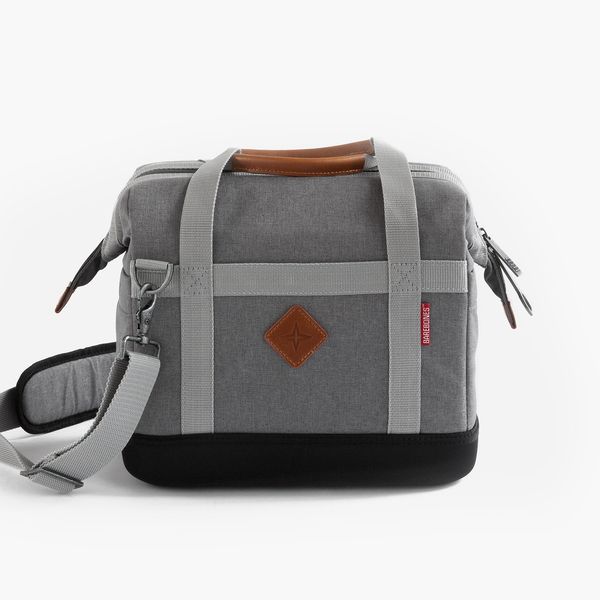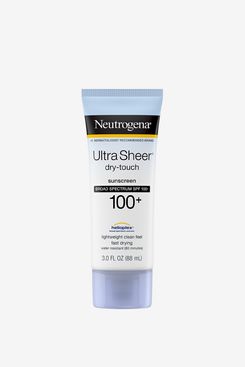
As a full-time travel editor and writer, I’ve reported road trip stories in North Iceland, Ireland, Tasmania, Alberta, Alaska, Colorado, and Texas Hill Country. I’ve covered the best road-trip apps and podcasts, plus everything you need to know about road-tripping with pets. And just a few years ago, my partner and I crisscrossed America on a 16-month, 40-state, 229-city search for a new hometown. (We chose Minneapolis.) As much time as I’ve spent on the open road, I’m not one for gimmicks; you’ll never find me shelling out for flimsy steering wheel desks, headrest bling, or as-seen-on-Shark Tank seat-gap fillers. I’m a militantly minimalist packer, having once traveled Asia for a year with a 35-liter carry-on, and I really put my gear through the wringer. And while travel looks a little bit different this year for all of us, here’s what I’ll never leave home without — especially now.
The Centers for Disease Control and Prevention has made one thing clear: It would prefer that everyone stayed home. But if that’s not in the cards, the least a road-tripper can do is prioritize safety. I use a squirt of hand sanitizer before and after every public interaction. Purell leaves my hands feeling pretty chapped, so I’ve switched to Maapilim. It’s still 70 percent ethyl alcohol, so it kills 99.9 percent of bacteria, but the formula is also infused with aloe vera — meaning it goes on like silk, dries superfast, and leaves my hands smelling pleasantly of bergamot, jasmine, and cedarwood.
The L.A.-based apron-makers at Hedley & Bennett are a staple of hip restaurant uniforms everywhere, but since Covid-19 began, they’ve become de facto mask makers, too. For every mask purchased, the company donates a second mask to a front-line worker. They’re double-layered with an interior pocket (I slip a fresh coffee filter in there every day for added protection) and available in a cool selection of muted colors, from chambray to natural beige.
A Leatherman multi-tool is a glove-box staple — up there with my registration, extra napkins, and emergency beef jerky. But this versatile carabiner is particularly useful in the COVID-19 era. Made of a naturally antimicrobial copper alloy, the pocket tool helps me avoid touching grody surfaces when I’m bouncing around the country. The hook opens many types of doors and doubles as a purse holder when attached to a table. The tip of the carabiner works as a button pusher for elevators and ATMs. There’s even a built-in bottle opener for after I pitch camp.
Disposable gloves are helpful when pumping gas, paying tolls, picking up food at a drive-through, or toilet breaking at a highway rest stop. I stash a box under the passenger seat for easy access. Wostar’s gloves are stretchy and strong, latex-free, and available in classic doctor’s office blue as well as less clinical colors like purple and black.
On my last big U.S.A. tour, Barebones’s 96-can rolling porter cooler was our go-to mobile kitchen, ferrying our perishables and leftovers from site to site. That model is currently sold out, but the certified B Corp makes smaller insulated coolers that are just as portable (and, frankly, better suited to folks who aren’t traveling the country for a year straight). The Explorer Cooler, which is on sale right now, holds up to 36 12-ounce cans and has a bottle opener built into its zipper pull. Dump a bag of ice in the bucket and it’ll keep everything chilled for up to 48 hours.
I’ve traversed our fine country with Chihuahuas on numerous occasions, and this duet of simple collapsible dog bowls have stood the test of time. They’re easy to clean and light enough to carry on day hikes. (Note the convenient carabiner attachment.) I simply pop it open when my pups are thirsty and smush it closed when not in use.
For the humans in the car, I’m all about this collapsible water bottle. It packs flat when not in use; the squishable shape also means it fits most cup holders. I’m forever thirsty, so the one-liter suits me well, but Vapur also makes 0.7-liter and 0.4-liter versions in various design motifs.
Though conserving space isn’t as crucial when driving as flying, I still swear by compression cubes to keep everything neatly organized. I store toiletries with the potential to leak in one cube; underwear, socks, bras, and swimsuits in another; rolled T-shirts and leggings in a third; and hiking boots in a fourth, just so I never track dirt into my suitcase or car.
I’ve always worn Merino wool base layers when camping or doing wintry activities like ice climbing and dog sledding. Not only does it keep me warm when it’s cold out and cool when it’s hot, Merino wool dries fast, never wrinkles, and rarely stinks of body odor, no matter how little I wash it. These magical powers make it a must-pack clothing item for road trips. Unbound Merino’s unisex line of tees, tanks, sweatshirts, and hoodies come in basic colors, so it’s easy to adopt a uniform.
When I’m road-tripping, there’s nothing I love more than rolling down the windows on a blue-sky day, blasting some jams, and letting the wind whip through my hair while I cruise down a highway. It’s very freeing in a Thelma & Louise kind of way — until my exposed arm burns bright red. Sun visors are worthless in circumstances like these; the only workaround is to slather on sunscreen. I prefer Neutrogena’s 100 SPF Dry-Touch line because it protects my Lydia Deetz–pale skin and never leaves behind a greasy residue.
When I lived abroad in Asia, I fell in love with Korean and Japanese beauty products. Since I can’t justify hauling everything I’d need for a ten-step skin-care routine on a road trip, I slip in a few luxuries instead — like a rollerball perfume or a single-use sheet mask. The latter is especially quenching if my skin feels parched after a long day of driving in an air-conditioned vehicle. My latest obsession is the Egg Cream line from South Korean cult brand Too Cool for School. This serum-soaked mask, made with the extracts of eggs and coconut, feels slippery but clings nicely to the contours of my face. After 15 to 20 minutes, my skin looks visibly dewier — as if I’d spent the day at a spa rather than driving across Nebraska.
This isn’t the sexiest thing on my list, but it’s important for keeping phones and laptops juiced on the go. The lightweight adapter plugs into my car’s cigarette lighter, yielding two fast-charging AC outlets and two USB ports. Highly recommended for all blogger/Instagram types.
Other than changing a tire, I’m not much of a do-it-yourselfer when it comes to car trouble. But keeping this emergency kit in my trunk at least makes me feel better. The set includes jumper cables, a two-in-one screwdriver, duct tape, a bungee cord, cable ties, a flashlight with batteries (should you break down at night), a poncho (should it also be raining, Rocky Horror Picture Show-style), and a 45-piece first-aid kit.
Unless you’re a car mechanic (or dating one), sign up for a AAA membership. I’ve had mine for more than five years and it’s paid for itself time and time again. There are multiple membership tiers based on vehicle type and personal needs, but the entry-level program includes 24-7 emergency roadside assistance — with towing up to five miles and battery jumpstarts or replacements. Another membership perk: discounts at more than 100,000 partners, including hotels and commonly sighted roadside restaurants.
The National Park Service is still working out some kinks with its reopening plans, from deciding which campsites and visitor centers will be accessible this summer to determining what fees to charge (or waive) for usage. Whatever the case, I’m happy to support our incredible parks system by buying an annual pass. One vehicle permit grants me access to more than 2,000 federal recreation sites, including wildlife refuges, major national parks like Yellowstone and Glacier, and day-use fees at national forests overseen by the Bureau of Land Management. The cost of a single-vehicle permit for some national parks can be as high as $35 — making this pass a steal if you plan on visiting at least a few along the way.
The Strategist is designed to surface the most useful, expert recommendations for things to buy across the vast e-commerce landscape. Some of our latest conquests include the best acne treatments, rolling luggage, pillows for side sleepers, natural anxiety remedies, and bath towels. We update links when possible, but note that deals can expire and all prices are subject to change.





















